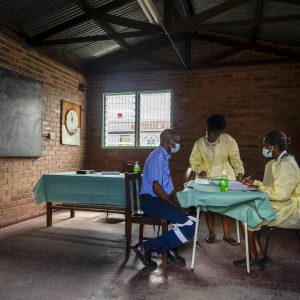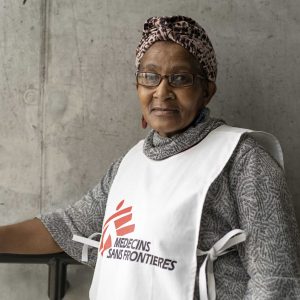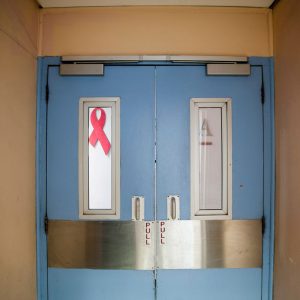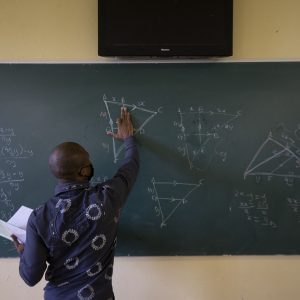Funding must be allocated to treat drivers of HIV
If South Africa wants to strengthen the prevention arm of its HIV programme, providing comprehensive sex education in schools and bolstering the HIV/Aids Life Skills grant is vital.
Author:
1 December 2021

On this World Aids Day (1 December), South Africa still has the world’s largest HIV burden, with 7.7 million people currently living with HIV amid a shrinking HIV budget.
Following the November 2021 medium-term budget policy statement, civil society organisations have raised concerns that diminished funding to provinces, both through the equitable share and through conditional grants, may result in crucial HIV and Aids targets being missed. The National Treasury has also failed to provide clear information or concrete plans to assist provinces to meet their HIV programme targets amid these budget constraints.
Related article:
The February 2021 national budget tabled by former minister of finance Tito Mboweni saw the baseline of the conditional grant for HIV reduced by a total of R5.8 billion over the next three years. No additional funding was allocated in the medium-term budget policy statement for 2022.
Concerns over the decline in HIV financing and the impact on the Department of Health’s ability to deliver services effectively can be traced back to 2017, when Jose Antonio Izazola Licea, the United Nations Programme on HIV and Aids (UNAIDS) special adviser for resources tracking and finances, warned that “with donor support plateauing and expected to decline, the success of South Africa’s HIV programme will rest on its ability to mobilise and manage a sustainable flow of domestic resources”.
The HIV conditional grant
Over the past decade, South Africa has made significant progress in tackling the HIV epidemic, channelling critical investments through the HIV conditional grant. In collaboration with developmental partners and agencies such as the Global Fund to Fight Aids, Tuberculosis and Malaria, and the United States President’s Emergency Plan for Aids Relief, great strides have been made with the UNAIDS’s 90-90-90 treatment targets. South Africa adopted these targets in its national strategic plan for HIV, tuberculosis (TB) and sexually transmitted infections (STIs) for 2017-2022.
According to the latest outputs from the Thembisa model, a mathematical model of South Africa’s HIV epidemic, in 2020, 92.4% of people living with HIV knew their status, 71.9% of those diagnosed were on HIV treatment and 91.2% of those on treatment were virally suppressed. Further, connected to the progress of the country’s antiretroviral therapy programme and HIV prevention tactics, life expectancy for people living with HIV has improved from a life expectancy at birth of 53.5 years in 2004 to 66.6 years in 2020. These are important strides in a country once infamous for Aids denialism.
Related article:
Looking forward, to deal with the underlying causes of HIV incidence, we need to consider how best to overcome gaps and push progress, including through funding allocations.
Addressing the symptom, or the cause?
Health activists have called for closer interrogation of the effectiveness of the HIV conditional grant.
Even before the Covid-19 pandemic disruptions to the HIV programme, South Africa faced social, economic, gender and health-based challenges, including high rates of teenage pregnancy, gender-based violence, high rates of sex work, lack of quality education, widespread poverty, inequality and unemployment.
These challenges are underpinned and exacerbated by poor policy choices and negligible resource allocation to the social and structural determinants of health that give rise to new infections, low treatment uptake and low adherence rates among key population groups.
Support for specific programmes
The Thembisa model shows that the highest incidence rates are among female sex workers and men who have sex with men (MSM). Despite efforts to provide condoms and pre-exposure prophylaxis (PrEP) to female sex workers and some MSM, there is still low uptake and retention rates of these preventative interventions. The Thembisa model (version 4.3) estimated a PrEP coverage rate of only 3% and 1% in female sex workers and MSM, respectively.
“These groups require special attention with respect to prevention and significantly increased access to treatment”, said former health department deputy director-general Yogan Pillay. It is crucial that programmes targeting these groups are strengthened and supported through adequate funding nationally and provincially.
Related article:
Although President Cyril Ramaphosa in 2019 publicly launched an HIV programme for sex workers and declared that “sex work is work”, female sex workers remain vulnerable to police harassment and stigma. The relationship between sex work and HIV rates is an issue to which a number of reports have drawn attention. Sex work is a profession that is practised disproportionately by women who are driven by food insecurity and insecure living conditions. These women also face a higher risk of contraception-free sex and gender-based violence, so the need for the decriminalisation of sex work remains a pressing issue.
Roping in the basic education sector
Tackling the impact of HIV is not something that the health sector can do alone. While the health sector has made great strides in testing and treatment of HIV, more needs to be done to prevent new infections, encourage adherence to treatment, educate communities, and counter stigma and discrimination. Providing condoms and PrEP is a critical part of the solution, but so is changing attitudes, behaviours and knowledge. This will require resources, so we need significant investment in the socioeconomic determinants of health to end the HIV epidemic.
Government has flagged the basic education sector as a crucial role player in these HIV prevention efforts. The HIV/Aids Life Skills conditional grant funds educational initiatives within schools related to HIV. Some of the strategic goals of the conditional grant include “addressing social and structural drivers of HIV” and “contributing to preventing new HIV, STIs and TB infections”.
But concerningly, the HIV/Aids Life Skills conditional grant was slashed in the June 2020 supplementary budget. The grant was cut by R60 million and a further R40 million of the grant was reprioritised for Covid-19 information at schools, which meant, among others, less money for training teachers to deliver comprehensive sexuality education (CSE). Accounting for this reduction, the supplementary budget review explained that “all planned training sessions for over 20 000 educators [were] cancelled” in 2020.
Related article:
Research from around the world, including South Africa, has found that effective CSE programmes delivered by well-trained teachers result in improved knowledge about HIV and pregnancy prevention, decreased sexual risk-taking, the prevention of learners having multiple concurrent sexual partners, improved attitudes towards sexual refusal and condom use, and delayed sexual debut.
Despite the clear need to strengthen South Africa’s CSE programme as part of efforts to reduce new HIV infections and address the attitudes and behaviours that lead to gender-based violence, this does not seem to be a funding priority for the government. The R100 million lost to the HIV/Aids Life Skills conditional grant was not recovered in the February 2021 budget and, worryingly, Minister of Finance Enoch Godongwana’s medium-term budget policy statement reduced the conditional grant by R860 000 in nominal terms in the 2022-2023 financial year.
Providing CSE in schools and training teachers to deliver this curriculum will be vital if South Africa wants to strengthen the prevention arm of its HIV programme, which it definitely should. It is important that the HIV/Aids Life Skills Grant, as one of the key pieces of a broader HIV prevention strategy, be supported and strengthened.
Related article:
The HIV conditional grant also remains a vital funding stream for the prevention and treatment of HIV, but its ability to meet the various challenges faced in our HIV response is under threat. Cuts to the grant and a lack of investment in CSE and in specialised services for key populations undermine the possibility of “an end to Aids” – and to a future where no one is left behind.
Mbali Baduza is legal researcher in the health rights programme at Section27 and Julia Chaskalson is a research and advocacy officer at Section27.
This article was first published in Spotlight.





